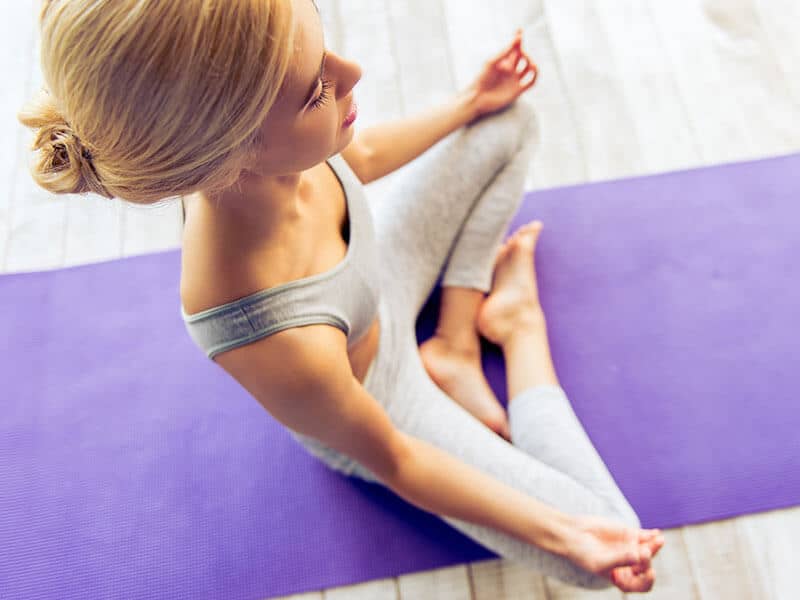The physical benefits of yoga are obvious: Your body becomes more
flexible, your sleep more restful. Your circulation and concentration
improve, and your overall sense of well-being increases tenfold.
But the problem with yoga is actually finding the time to do it. Yoga asanas (poses) cannot be squeezed into a 10-minute break between finishing a conference call and attending a cocktail party. To achieve optimum benefits, most yoga teachers recommend practicing three times a week for at least half an hour.
What can you do then to achieve yoga's benefits without sacrificing too much time? For me, the breakthrough occurred when I separated yoga from the asanas. While hatha yoga and asanas are one aspect of yoga, they aren't its entirety. Yoga, as Patanjali envisioned it, includes service to others, study of ancient texts, and most important, self-control. With that in mind, I decided to incorporate what I considered the two most appealing aspects of yoga into my daily routine: movement and meditation. Yogis, who have practiced the asanas for years, will tell you that yoga is meditation in movement. When you arch upward while doing the surya-namaskara, a series of stretches where the body arches back and forward; when you stand erect in a tada-asana, a pose where you stand upright, like a tree, on the left leg with the right leg placed on the left thigh; when you bend downward into an uttana-asana, where you touch your toes with your hands, what you are really doing is focusing the mind. That, along with breathing correctly, stretching your muscles, and balancing the organs, is what yoga is all about.
And it is possible to live this yoga every day. When I chop vegetables for dinner, I allow the tapping of the knife on the cutting board to carry me into a relaxed rhythm. I pay attention to my spine and stand as erect as I can. While the pasta water is boiling, I use my kitchen counters as boundaries and stretch a little. While stirring vegetables in my wok, I loosen my head and neck. In this way, the daily ritual of cooking gives me several moments to limber up my body.
The trick is to find an activity that you do at least three times a week for, say, half an hour. It could be doing the laundry, ironing clothes, swabbing the floor, cooking, washing dishes--any repetitive activity that you do often. The next step is to cultivate mindfulness so that you are aware of your body while doing these things.
Breathing deeply and diaphragmatically is a good place to start. After a few deep breaths, you might become aware that you are scrunching your neck and compressing your spine while bending toward your iron. What helps me when I iron is to stretch my feet like I was doing a tada-asana. With my feet extended and planted firmly on the ground, it is easy to bend from my hips rather than from my back. Soon, I get into the flow of ironing, breathing deeply, my arms moving back and forth, my hips bending a little as I flex and stretch. I am lulled into a calm, meditative state that lasts through the entire hour of ironing. Once you learn to become mindful while doing menial tasks, it is easy to apply it to other areas of action, such as climbing up the stairs, walking on the street, or soaping the dog. Most actions are repetitive, and meditation involves getting into the ebb and flow, the pulse and throb, the cadence of each action. As I type this on my keyboard, I am sitting cross-legged in a padma-asana pose on my chair, my back erect, my arms extended to my side, occasionally noticing the rise and fall of my stomach as well as the continuous tapping of my keyboard. I try to soften my cheeks, empty my mind, and lull my body into a relaxed state.
Once you force yourself to become aware of every moment, it is hard for the mind's chatter to intrude. You are so busy caught up in the moment that you don't have the time or mental space to accommodate the "five devils" of lust, anger, jealousy, bitterness, and sadness. This is not to say that you will never get angry or frustrated again. Only that you are on the road to equanimity.

